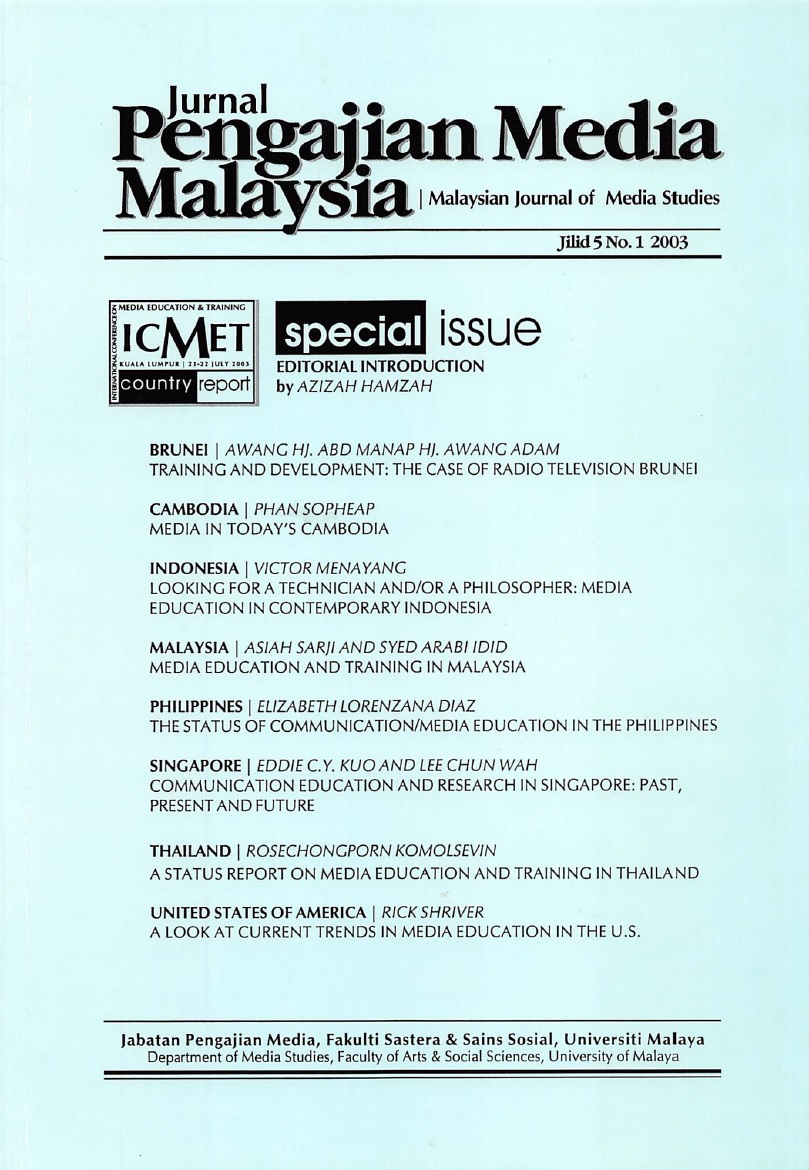The Status of Communication/ Media Education in Philippines
Main Article Content
Abstract
A brief overview of the media system in Philippines introduces the topic and then proceeds with a historical development of communication/media education and traning starting as early as 1936 when the oldest university, the University of Sto. Thomas offered a Bachelor of Literature in Journalism. In 1971, a survey conducted placed the number of schools offereing programs in journalism and communication at thirteen and subsequent studies showed an increase of fifty-one in 1988, and at present, one hundred thrity four. The focus of the paper will be the programs of the University of Philippines, College of Mass Communication which evolved from an institute in 1965 into a college in 1988 with degree program in journalism, broadcasting, communication research and film and audio-visual communication. All programs offer undergraduate and graduate courses. Only Communication Research offers a Ph.D in communication. As the premier university of the country, the University of Philppines has been the model of most communication programs that have been established. The role of the Philippine Association fo Communication Educators (PACE) foundation, the only nationwide organization is discussed to some extent. PACE has been responsible for many innovative communication teaching-learning approaches and continues to encourage all schools to be relevant and updated with thela test trends by conducting seminar, workshops, training programs and holding an annual general membership meeting to address pressing and current issues and challenges. Unfortunately, the quality of communication education has not kept pace witht he increasing number of schools. However, PACE has been actively correcting the gap with its plans and activities to upgrade the standards of communication education and is working closely with the Commission on Higher Education (CHED) on this. A recent survey on a profile and training needs of educators reveals a need to provide a continuing education agenda which PACE is addressing. The challgenes of the Communication and Information Revolution to Philippine Communication education will conclude the paper.
Downloads
Article Details

This work is licensed under a Creative Commons Attribution 4.0 International License.
